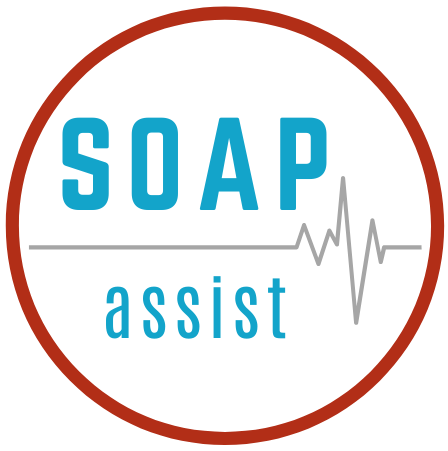How do you write a description of a patient you haven’t seen yet? Each patient encounter is unique. There are always extenuating circumstances, a typical symptoms or something that make a particular patient encounter unlike any before it. Some of these nuances have clinical significance, while others do not. In this article, we will discuss how to make a template for a patient you haven’t seen yet. In this article, we will discuss how to create templates specifically oriented towards diagnosis or treatment so that your final SOAP note reaches its maximum potential.
Truly, it is difficult to write a description of something that has not yet been observed. Yet, a large portion of the variability seen in patient encounters can be accounted for through the use of templates.
Templates should be organized by chief complaint. Templates for anemia will contain the relevant information for the workup of an anemic patient, but not for a patient with diabetes. This significantly narrows the amount of information that is needed. Instead of asking questions about how the patient monitors the blood sugar, preformatted text will be geared toward whether or not the patient has pica symptoms or if they have ever had a Roux-en-Y gastric bypass. Templates can be as nuanced as necessary.
There are certain elements of an encounter that always take place. For example, if the patient has pain, they are typically asked about onset, quality, radiation, severity, timing etc. A preformatted template can contain space for documentation of these elements. Just filling in the blanks, so to speak. The challenge comes when specific questions are asked. These questions are typical yes or no style questions. It is impossible to know beforehand to which questions the patient will answer yes and which they will answer no. Some get around this problem by making a table of these symptoms and then simply document an “x” next to the pertinent positives. This is typically effective, though it can have its drawbacks.
One problem with this way of documenting is that it changes the way the document is read. These types of questions typically appear in the history of present illness (HPI) section of a SOAP note. This section is typically in narrative format. Making a break from a narrative to review a table is slightly more cumbersome for the reader. Another drawback is that it does not allow for commentary. The patient may answer “yes” to a particular question, but it turns out they are referencing an old symptom or symptom related to another, already known, diagnosis. This is information that is important when it comes to clinical decision making. The nuances of these circumstances should be documented.
At SOAPassist, we typically address this problem by making a list of associated symptoms in the narrative format and then documenting them in the negative. For example, “Associated symptoms include [ ]. The patient denies palpitations, shortness of breath, headache, back pain, or abdominal pain.” Whether you’re documenting real time during a patient encounter or you have printed out your template to enter later, this solution is effective. Simply move the symptoms into the previous sentence if the patient is experiencing them. This editing process is simple and maintains a comfortable flow for the reader.
Templates come in all shapes and sizes. Yet, convention is a useful tool when it comes to real-time utilization templates. One convention we use at SOAPassist is documenting everything in the negative. Questions, symptoms, medical history and more are all documented as if the patient does not have them. There are several reasons for this. Patients typically have fewer than half of the associated symptoms asked. Since these questions are already in the negative, it means the provider has to do less editing work on the back end.
The other reason we use this convention is that it helps providers know what to expect. When reading through a template they can expect that everything in the template is in the negative and therefore must be switched to the positive if it is pertinent to the patient.
We use other conventions as well. We have a very structured format for documenting onset, quality, radiation, severity, and timing as these are commonly asked questions as it relates to pain. We realize that many medical providers already have a convention for asking these types of questions. That’s why we were sure to include the ability for providers to adapt the SOAPassist curated templates to their own practice.
All of these conventions are designed to streamline the medical documentation process for the provider.
Disclaimer: SOAPassist curated templates are created for use by licensed medical providers. While they are examples of what a provider might document, their intended purpose is to provide a starting point for documentation and do not constitute medical recommendations.

